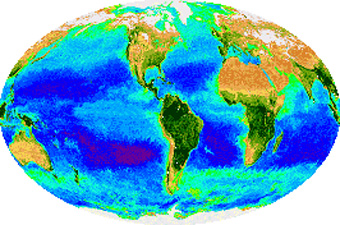(By Manuel Palacios, From his book: “70%. Therapeutic use of the internal and external sea”)
Sea hides, disseminated in the breast of its waters, thousands of millions of tons of approximately 77 chemical elements: chlorine, sodium, magnesium, sulfur, aluminum, iodine, copper, zinc, mercury, gold, phosphates and many other . At current time, three main minerals that are extracted in profitable way from the sea are salt (only product that man obtains in big quantities); magnesium (together with its compounds), and bromine.
The existence of different salts dissolved in sea water is due that during thousands millions of years, rivers constantly have transported substances coming from erosion(rains), until ocean .
Salt concentration stays more or less constant although glide waters contribute annually with 400 million tons of solid substances besides that, when evaporating ocean water, this passes to atmosphere in form of distilled water leaving salts.Concentration changes that could happen by these phenomenons are very small (is difficult that man can perceive them)
Sea water is compound by 96.5 percent of water and 3.5 percent of dissolved salts; on average it contains 35 grams of salts per liter,(It has 35 parts per thousand (35,000)), although this proportion varies according to areas of the planet being the half term from 27 to 33 parts per thousand; i.e.Baltic Sea has great quantity of sweet water, it salinity is from zero to two parts per thousand (it´s reallly a big lake), while Red and Dead Sea reach more than 40 parts; Mediterranean Sea presents the average from 37 to 39 and some arctic seas from 30 to 33 parts per thousand.
Main chemical elements in sea are: chlorine, sodium, carbon, sulfur, calcium, potassium and magnesium. These elements are associate among them forming very varied combinations: i.e: carbon forms carbonates and bicarbonates, sulfur forms sulfates, chlorine is presented in form of chlorides. Among all these substances dissolved in sea water, sodium chloride is the most abundant and represent 80 percent of salts that compose this water.
Also, in ocean are disolved all gases that are in the tmosphere like nitrogen, oxygen, carbonic dioxide and strange gases distributed in variable quantities depending of physical characteristics, mainly temperature and salinity that determine their concentration of them in the water from the surface when establishing a balance with the atmosphere and when controlling the solubility of these gases.
Metabolic action of organisms that live in sea influences in changes of concentration of gases dissolved in water. Oxygen have big importance in these biological processes, and for that reason, it the most studied. Carbonic dioxide is also important in these processes, on the other hand the nitrogen is seemingly inert.

Leave a comment